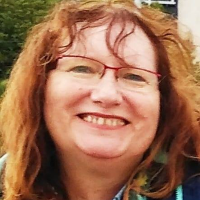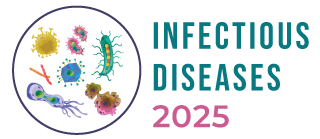Infectious Diseases 2025

Dokuz Eylul University, Turkey
Abstract:
Nanocomposites, formed by combining of polymer or ceramic with nanofillers (nano-sized inclusions like nanoparticles or nanofibers), possess distinct attributes attributed to their composition. Their unique physicochemical properties and interaction capabilities with microbial cells position them as a promising avenue for infectious disease treatment. The escalating prevalence of multi-drug resistant bacteria intensifies the need for alternative solutions. Traditional approaches involve antimicrobial agents like antibiotics, antivirals, and antifungals, targeting specific microbial aspects. This study presents a comprehensive overview of diverse nanocomposite types and highlights the potential of tailored matrix and antibacterial agent selection within nanocomposites to enhance treatment efficacy and decrease antibiotic resistance risks. Challenges such as toxicity, safety, and scalability in clinical applications are also acknowledged. Ultimately, the convergence of nanotechnology and infectious disease research offers the prospect of enhanced therapeutic strategies, envisioning a future wherein advanced materials revolutionize the landscape of medical treatment.
Biography:
Delia Teresa Sponza is currently working as a professor at Dokuz Eylül University, Department of Environmental Engineering. Scientific study topics are; Environmental engineering microbiology, Environmental engineering ecology, Treatment of fluidized bed and activated sludge systems, Nutrient removal, Activated sludge microbiology, Environmental health, Industrial toxicity and toxicity studies, The effect of heavy metals on microorganisms, Treatment of toxic compounds by anaerobic / aerobic sequential processes, Anaerobic treatment of organic chemicals that cause industrial toxicity and wastewater containing them, Anaerobic treatability of wastewater containing dyes, Treatment of antibiotics with anaerobic and aerobic sequential systems, Anaerobic and aerobic treatment of domestic organic wastes with different industrial treatment sludges, Treatment of polyaromatic compounds with bio-surfactants in anaerobic and aerobic environments, Treatment of petrochemical, Textile and olive processing industry wastewater by sonication, Treatment of olive processing industry wastewater with nanoparticles and the toxicity of nanoparticles. She has many international publications with an H index of 42 and 6000 citations.
